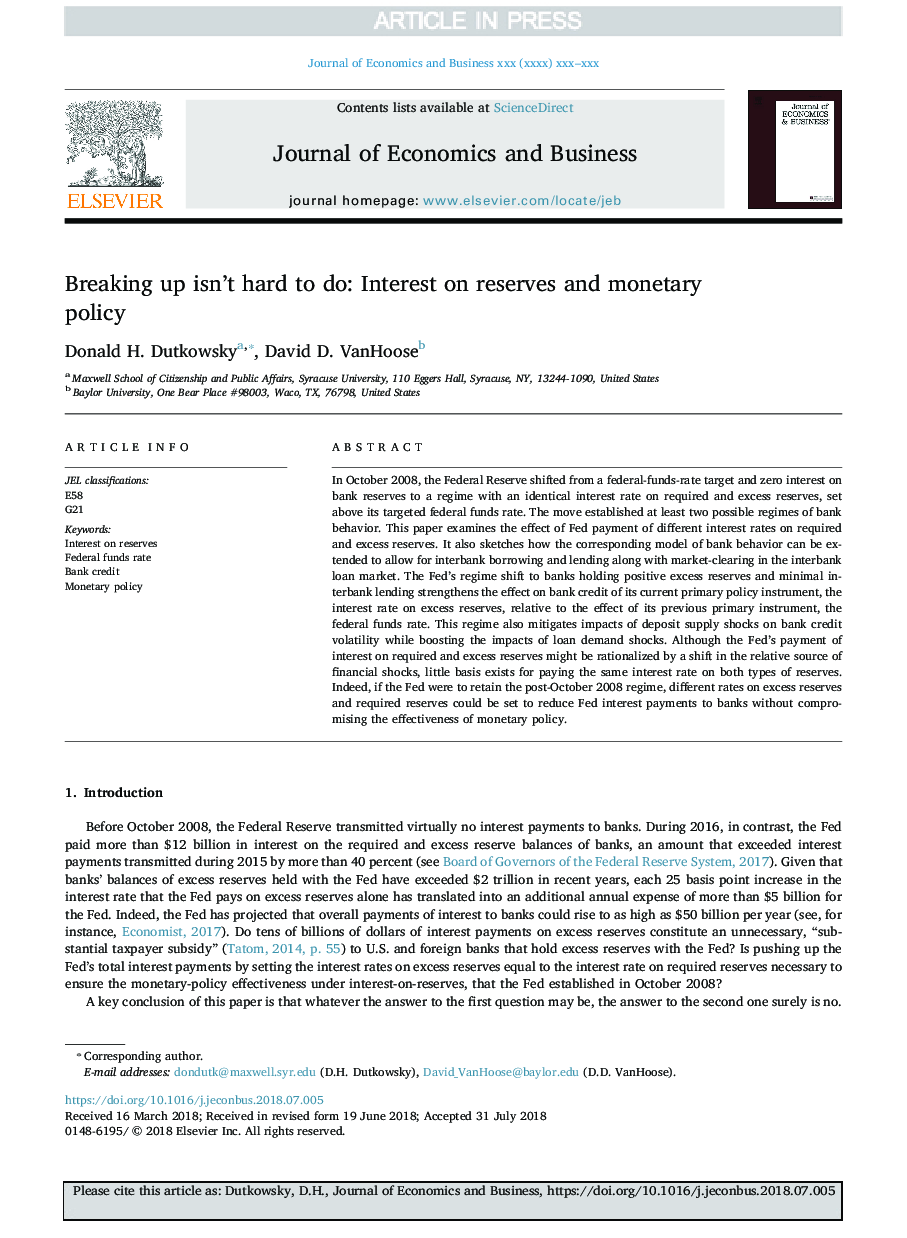| Article ID | Journal | Published Year | Pages | File Type |
|---|---|---|---|---|
| 10226788 | Journal of Economics and Business | 2018 | 13 Pages |
Abstract
In October 2008, the Federal Reserve shifted from a federal-funds-rate target and zero interest on bank reserves to a regime with an identical interest rate on required and excess reserves, set above its targeted federal funds rate. The move established at least two possible regimes of bank behavior. This paper examines the effect of Fed payment of different interest rates on required and excess reserves. It also sketches how the corresponding model of bank behavior can be extended to allow for interbank borrowing and lending along with market-clearing in the interbank loan market. The Fed's regime shift to banks holding positive excess reserves and minimal interbank lending strengthens the effect on bank credit of its current primary policy instrument, the interest rate on excess reserves, relative to the effect of its previous primary instrument, the federal funds rate. This regime also mitigates impacts of deposit supply shocks on bank credit volatility while boosting the impacts of loan demand shocks. Although the Fed's payment of interest on required and excess reserves might be rationalized by a shift in the relative source of financial shocks, little basis exists for paying the same interest rate on both types of reserves. Indeed, if the Fed were to retain the post-October 2008 regime, different rates on excess reserves and required reserves could be set to reduce Fed interest payments to banks without compromising the effectiveness of monetary policy.
Related Topics
Social Sciences and Humanities
Business, Management and Accounting
Strategy and Management
Authors
Donald H. Dutkowsky, David D. VanHoose,
